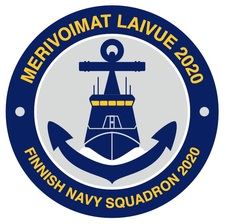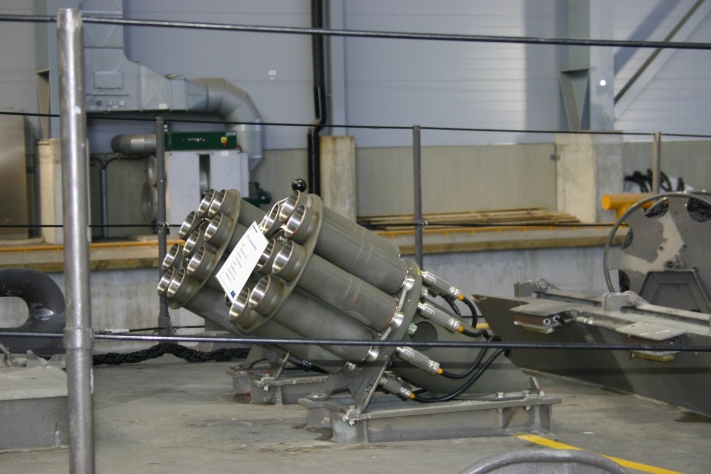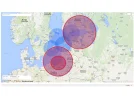SQUADRON 2020 – MADE FOR THE FINNISH COASTLINE
APRIL 5, 2016 CORPORAL FRISK
The acquisition of four multi-purpose corvettes by the Finnish Navy as part of the
Squadron 2020 (
fi. Laivue 2020) program received some
serious flak by BGen (ret.) Lauri Kiianlinna in Helsingin Sanomat last Friday, of exactly the kind
I warned would become widespreaddue to the Navy’s somewhat lacking marketing of the project. While I agree with Kiianlinnas assessment that the Army need further funds and that the ground based air defence needs to be fleshed out, many of the points raised in opposition of the project are either based on misunderstanding or in some instances flat-out wrong. As noted, this is partly a failure on the part of the Navy, who in today’s economy more than ever has to explain not only what they need, but also why. A simple “Trust us, we’ve checked the issue” (while correct) is no longer enough to the public or the other cash-strapped branches of the defence forces.
Finland is for all practical purposes
an island, and the only way we will keep our supply lines open for any extended time is through cargo vessels that enter the Baltic Sea in the Danish Straits, before sailing up the length of the Swedish coast until arriving in Finnish ports. This means that while the navy cannot win any wars for Finland, it can certainly lose them.
As such, Finland will need a navy to escort our merchant vessels at the very least until they reach Swedish waters. Currently this is done by a number of smaller vessels operating together to perform different individual roles:
- The Hämeenmaa-class minelayers are operating as the squadron leader/flagship, while having a limited ASW- and anti-air capability
- The Hamina-class FAC provide anti-ship missiles and a limited anti-air capability
- The Rauma-class FAC provide ASW-capability in the form of the only dedicated submarine-hunting sensor in the Finnish Navy as well as featuring limited ASW-weaponry. If the towed array is left home, it can instead use anti-ship missiles
It should be noted that a three-ship squadron like this faces a number of tough choices:
- A total of no more than 16 ITO 04 (‘Umkhonto’) surface-to-air missiles featuring a short 14 km range are available for air cover
- For the Rauma to find a submarine it needs to listen for it, meaning that it would prefer to keep some distance to the other ships. However, doing so lessens the protection offered by the short-range ITO 04 mounted on the other vessels
- None of the vessels sport any torpedoes, so If a submarine is found the vessels will attack it by driving towards it well within torpedo range while firing ASW-mortars
These ships, especially the Haminas, are very potent for their class. However, there is only so much equipment that can be fitted into the limited hull sizes available. Both of the FAC-classes also lack the ability to operate in ice, due to their light (and vulnerable) aluminium hulls. Their small size also seriously hamper their endurance, forcing them to return to port at short intervals. For a navy in which hiding in the cluttered archipelago is a central part of the doctrine, having to frequently return to fixed points to bunker up on fuel, supplies, and weapons, is far from ideal.
The Finnish idea regarding how to kill a submarine is drive towards it at speed, fire of a salvo of these at 400 meters, and hope the submarine doesn’t figure out a firing solution for their 18+ km ranged torpedoes. Saab Elma ASW-600 on a Rauma-class FAC. Source: own picture
The need for bigger hulls
The size is not a product of the urge to venture further into the Southern Baltic Sea or on international missions, but of the need to provide vessels that are able to operate in Finnish waters year-round, able to handle the varied threats they may encounter.
This is where the main problems of the opinion piece are. The new ships will not further strain the limited air defence resources available, they will not be sitting ducks, and they will not be restricted by ice. On the contrary, they will be able to hide better than the current fleet due to being less reliant on visiting known locations, they will carry their own air defence, and their big steel hulls will offer them ice-going capability as well as better resistance in the face of battle damage.
Of great interest is the vertical launch system (VLS) seen on the render pictures released by the navy. I have
discussed these in greater detail on the blog earlier, but the conclusion is that they would bring a marked increase in the air defence of not only the ship themselves, but also of the general area of operations. In fact, in the best of world’s we might even get to see the
Aster 30 onboard the corvettes, which would finally give the (southern parts of the) country a measure of protection against ballistic missiles. As such, the claim that these would tie up valuable air defence resources is wrong, and instead they might actually free up army units.
The discussion regarding the range of the weaponry is somewhat simplified. The max practical range is nowadays rarely reliant on what the sales material claim the missiles are capable of. Instead, the main question is how far out the enemy can be accurately located. Another issue that one rarely want to fire all missiles straight at the enemy, because A) it makes it easier to defend against compared to if the salvo is routed to come in from different angles at the same time, and B) it gives the enemy a vector to follow back to the location of our firing battery. To sum it up, the Navy wont fire anti-ship missiles, either from trucks or naval vessels, to Gotland any time soon, regardless of how the range rings look on the map.
One of the concept renders presented by the navy. Note hatch for towed array at stern(?) and VLS-array at the front. Source: Finnish Navy
When it comes to anti-submarine weapons, it seems like we will finally get a ship armed with torpedoes and proper sensors, which will make it possible to locate and fight off one of the most elusive threats our shipping lanes currently face. This is especially important as we currently lack any kind of airborne ASW-capability, and the only way to find submarines lurking outside of our archipelago is through the use of ships.
The other possibility is to assume that we can keep our waters protected without own ships, which is an interesting concept on paper. By employing shore-based anti-ship and surface-to-air missiles we would be able to ward off any intruders, or so the theory goes. However, by the very nature of these systems, they lack the operational mobility to keep up with merchant vessels moving in Finnish waters along the coast, and as such need to be pre-positioned so that they can cover the expected enemy attack vectors. They then need to be fed target data, and feature a redundancy in both firing units and sensors, so that the enemy isn’t able to create a gap in our defences where they can strike at our lifeline with impunity simply by knocking out a battery or two.
This can all be done, but to be fair it is highly doubtful if this advanced network of mutually supporting coastal sensors, truck-mounted anti-ship batteries, submarine hunting helicopters, and surface-to-air missiles, would be any cheaper than the corvettes. Crucially, the system would lack the flexibility offered by a surface squadron of multirole vessels, which are able to move with the merchant convoys, carrying their own sensors as well as weapons to fend of air, surface, and sub-surface threats. The similarities to the discussions regarding
ground based air defences contra getting new fighters are striking. This isn’t a case of “either/or”, but rather that a strong defence will have to be made up of multiple layers of different systems with their own strengths and weaknesses working in unison, and I fully expect the Navy to start looking into replacing the truck-mounted MTO 85M at some point in the future.
When it comes to coastal defence, I would like to see Squadron 2020 and ground units being networked with our HX-fighters, to let the fighters provide accurate target data through the use of a modern data link while letting the others act as silent ‘shooters’ with their radars turned off. This is a concept which for example Saab already has as an option for which includes both their air units and naval command and control systems, and one would assume that there is a requirement for HX and Squadron 2020 to be able to communicate with each other.
It isn’t about the Navy against the Army or the Air Force. At the end of the day, we’re all in this together.
Epilogue: The Panssarilaivat – White Elephants of the 1930’s
The
Väinämöinen-class of two coastal defence ships (
fi. Panssarilaivat) has long been regarded as the schoolbook example of wasted money. Being expensive and manpower intensive, they took almost no part in the Second World War, and the navy still managed to lose one of them with a large loss of men during one of their few wartime sorties.
However, while I agree that it was a strange decision to invest in major surface units when the army lacked anti-tank weaponry and artillery shells, the other side of the story is often forgotten. The war did play out in an extremely surprising way. The Winter War was fought almost entirely while the sea was frozen, and when the Continuation War broke out it didn’t take long until the Germans had occupied the whole southern coast of the Baltic Sea from the Danish Straits up to the outskirts of Leningrad. This made the relatively strong and modern Baltic Fleet trapped in their bases around the city until the end of the Continuation War. The exception was the submarine fleet, which every summer broke out to try and wreak havoc amongst Finnish and German shipping in the face of Finnish and German subchasers and submarines (until the Germans and Finns installed two nets over the entire Gulf of Finland!).
If things would have played out differently, and Finland would have had to stand alone, two floating coastal fortresses could suddenly have proved to be rather useful after all.


 . Jos tekee mieli pasauttaa väitteeltäni pohja pois, niin tehkää se validein perusteluin ilman mitään mutkumustaeitunnusiltäeiseniinvoiolla.
. Jos tekee mieli pasauttaa väitteeltäni pohja pois, niin tehkää se validein perusteluin ilman mitään mutkumustaeitunnusiltäeiseniinvoiolla.



